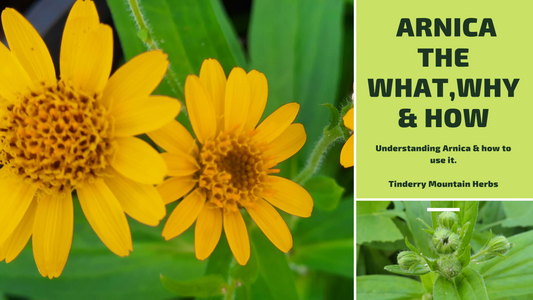You’re ordering just one packet of seed… Aren’t you are professional grower?
The options were one packet (30 seeds) or 1 gram (over 300+ seeds)
I had clicked the 1 packet button and was just about to complete… When I realised
I’m playing small here. Why not order a decent amount?
I’m a serious player here.
The 1-gram button was then clicked. Phewww!
Arnica a once common herb is now so hard to find
Confused…? We all are.
Arnica montana is commercially cultivated in Estonia and other parts of Europe, even New Zealand. Demand is greater though than supply. North American Herbalists use their own indigenous species (of which there are quite a few)
Australia has… backyard growers, herbalists wanting to have their own supply. That’s it…
Meanwhile changes in agricultural practices in Europe plus restrictions to areas allowing wild harvesting plus supply line disruptions and now we have a hard time sourcing this herb.
While it had been historically easy to source wild harvested material, there was no great need to build up a sustainable cultivated source…
We got lazy as an industry, so now we are paying the price for it.
Why the fuss about Arnica?
Arnica is a standard in Herbal & Homeopathic usage for many years, even centuries.
It’s part of our Natural medicine Materia Medica (range of remedies used in medicine) as Arnica is the number one plant for treating bruises contusions and states of serious injury.
An alpine plant it grows in mountainous regions of Europe and has been historically harvested from the wild. It’s in the daisy family its yellow compound flowers standing tall and proud in alpine meadows.
Not being able to source this plant is like an artist no longer having a much-used colour available for their palette.
What’s Tinderry Mountain Herbs doing about this
Well, how about growing the plant which leads us back to my poised finger on the order button.
Several herbalists in Australia are starting to grow their own Arnica having found it unavailable commercially.
That what I’m doing… Proof of concept that it is possible to grow it successfully & easily in Australia.
What types of Arnicas are there?
Is it just Arnica montana the classical species from Europe you see talked about in all of the herb books?
No…
There is another interchangeable species - Arnica chamissonis growing well on the farm.
It’s from North America which incidentally has several Arnica species all active therapeutically.
Arnica chamissonis is recognised by the European commission as being equivalent therapeutically.
Also, it’s a darn sight easier to grow. Often called the lowland arnica as it is not being dependent on altitude to grow.
Adding Arnica montana to the grow list is the icing on the cake.
The Future
What I would like to see is several growers dispersed around the country at different levels of scale lending resilience and some level of supply to our domestic market.
There’s also room for growers at scale too. Here’s an excellent opportunity for specialist growers to supply a much-needed herb. Having herbs supplied from commercial cultivation take the pressure of wild populations and supplies a better quality & more effective medicine. Win Win Win.
Commercial material is not always good quality.
See the pithy quote below from Michael Moore.
‘The bright yellow leaves manage to reach us looking like fluffy brown stuffing removed from an ancient sofa left in the backyard for 12 years…. I have been unable, in two decades to reduce the Arnica I have gathered to the morbid lifelessness of the Arnica I have purchased in normal commerce…. Maybe they use special life-sucking machinery especially developed for the herb trade and politicians. Unlike the latter I am sure the international herb trade means well.’
Quote - Michael Moore – Medicinal Plants of the Pacific West.1995
My stand for this valuable herb
To have the plant growing in Australia. A range of growers earning a good livelihood supplying the local market. High quality plant material being produced that makes high quality medicine.
The wild populations of Arnica breathing a bit easier as this enterprise takes the pressure off them and gets us out of unsustainable logistic supply lines for our important botanical medicines.




